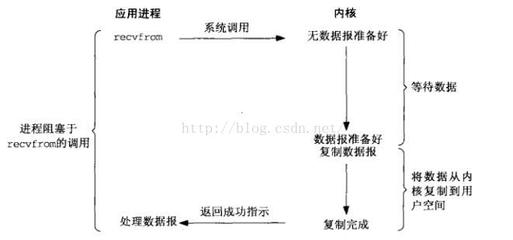插件下载地址:http://docs.cacti.net/templates
monitor插件,提供更简略、直观的设备状态图示;监视器
thold插件,提供设备异常预警。阈值
syslog插件,提供cacti日志监控服务
settings:给不同的插件提供一些共用的信息,如邮件信息,dns信息
weathermap:绘制网络拓扑的插件,气象图
discover:的功能就是让cacit自动发现主机,自动加入主机,自动画图
monitor插件的安装
#tar zxvf monitor-0.8.2.tar.gz
#mv monitor /usr/local/wwwroot/cacti/plugins/
点击console ->PluginManagement->在Actions处启用Monitor
进入"User Management"->点admin->RealmPermissions->勾选View Monitoring,至此Monitor插件安装完成。
thold插件的安装
#tar zxvf thold-0.4.3.tar.gz
#mv thold /usr/local/wwwroot/cacti/plugins/
点击console ->PluginManagement->在Actions处启用thold
点击console->Settings->Misc->Monitor->Grouping设置tree->View设置list,这时点击thold选项点击设备可以看到流量图
settings插件的安装
#tar zxvf discovery-0.8.5.tar.gz
#mv settings /usr/local/wwwroot/cacti/plugins/
点击console ->PluginManagement->在Actions处启用settings
discovery插件的安装
#tar zxvf discovery-0.8.5.tar.gz
#mv discovery /usr/local/wwwroot/cacti/plugins/
点击console ->PluginManagement->在Actions处启用discovery
进入"User Management"->点admin->RealmPermissions->勾选View Host Auto-Discovery,至此discovery插件安装完成
weathermap插件的安装
#uzip php-weathermap-0.97a.zip
#mv weathermap /usr/local/wwwroot/cacti/plugins/
#chown -R apache.apache/usr/local/wwwroot/cacti/plugins/weathermap
对weathermap的配置文件进行修改
#cd /usr/local/wwwroot/cacti/plugins/weathermap
#chmod u+w config/
#cp editor-conifg.php-dist editor-config.php#vieditor-config.php
$cacti_base = "/usr/local/wwwroot/cacti";
$cacti_url = "http://222.186.43.15/cacti";
$mapdir= $cacti_base .' /plugins/weathermap/configs';
$ignore_cacti = FALSE;
将editor.php中的ENABLED=false修改为true,否则weathermap点击Editor时会报错
#cd /usr/local/wwwroot/cacti/plugins/weathermap
#vi editor.php
//$ENABLED=false;将false修改为true
$ENABLED=true;
点击console ->PluginManagement->在Actions处启用weathermap,至此weathermap插件安装完成。
syslog插件的安装
1.安装syslog-ng服务
#rpm -ivh syslog-ng-2.1.4-1.el5.i386.rpm
2.安装syslog插件
#tar zxvf syslog-0.5.2.tar.gz
#mv syslog /usr/local/wwwroot/cacti/plugins/
点击console ->PluginManagement->在Actions处启用syslog
进入"User Management"->点admin->RealmPermissions->勾选View Syslog和
Configure Syslog Alerts / Reports
#m ysql -uroot -p
mysql>create databasesyslog; 创建一个数据库供syslog使用mysql>usesyslog;
mysql>source/usr/local/wwwroot/cacti/plugins/syslog/syslog.sql导入mysql数据库mysql>grant all onsyslog.* to cacti@localhost identified by 'cacti';添加一个数据库账号cacti密码为cacti用以访问syslog库mysql>flushprivileges;
#cd /usr/local/wwwroot/cacti/plugins/syslog
#vi config.php
$syslogdb_type = 'mysql';
$syslogdb_default = 'syslog';
$syslogdb_hostname = 'localhost';
$syslogdb_username = 'cacti';
$syslogdb_password = 'cacti';
#vi /etc/syslog-ng/syslog-ng.conf 在最后末尾添加如下:
source net {
udp();
};
destination d_mysql {
pipe("/tmp/mysql.pipe"
template("INSERT INTO syslog_incoming (host, facility, priority,date, time, message) VALUES ( '$HOST', '$FACILITY', '$PRIORITY','$YEAR-$MONTH-$DAY', '$HOUR:$MIN:$SEC', '$MSG' );n")
template-escape(yes)
);
};
log { source(net); destination(d_mysql); };
log { source(s_sys); destination(d_mysql);};
完成之后,执行
#service syslog restart
#service syslog-ng restart
在syslog插件目录下,编辑一个新的sh文件/plugins/syslog/syslog2mysql.sh,并且赋予可执行权限(同时该目录下
syslog_process.php也必须有可执行权限):
#vi/usr/local/wwwroot/cacti/plugins/syslog/syslog2mysql.sh输入
#!/bin/bash
if [ ! -e /tmp/mysql.pipe ]
then
mkfifo /tmp/mysql.pipe
fi
while [ -e /tmp/mysql.pipe ]
do mysql -u root syslog < /tmp/mysql.pipe>/dev/null
done
运行syslog2mysql.sh,如果没有任何显示,后台有该进程,则基本上成功了。在/etc/crontab中添加:
@reboot /usr/local/wwwroot/cacti/plugins/syslog2mysql.sh
*/1 * * * * php/usr/local/wwwroot/cacti/plugins/syslog_process.php
使开机执行syslog2mysql.sh,每分钟执行一次syslog_process.php
 爱华网
爱华网


